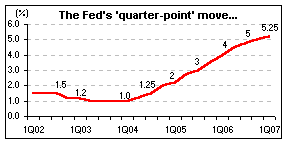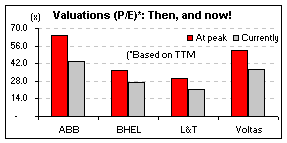Investing: Slow and steady wins the race!
Source: EM Noel Whittaker, financial author and investment advisor rightly said, “Life is full of uncertainties. Future investment earnings and interest and inflation rates are not known to anybody. However, I can guarantee you one thing. Those who put an investment program in place will have a lot more money when they come to retire than those who never get around to it.” Getting rich is not an easy thing. But, it is definitely a simple thing. It just requires 3 things: income, time and discipline. Many of us would be having income and time. All that is required is a pinch of discipline to find the perfect flavour. In this article, we highlight the power of regular investing, which is simple yet has the ingredients to make your investment a healthy outcome. Compounding: Compounding is a financial phenomenon that makes time and money work in your favor. It is what happens when your investment earnings are added to your principal, forming a larger base on which earnings may accumulate. And as your investment base gets larger, it has the potential to grow faster. For example, if you had Rs 5,000 in an account that paid 5% annually in simple interest for five years, you’d earn Rs250 a year, for a total of Rs 1, 250 in interest. In this case the interest rate and the yield are the same — 5% per year. But the same Rs 5,000 investment paying 5% interest compounded annually for five years would produce a total of Rs 1,381.41 in interest. Because you are earning interest on your interest, the yield – an average of 5.52% per year – is higher than the interest rate. The real magic of investing comes when you combine the power of compounding with continuous and regular investments – in other words, discipline. For example, if you start with a amount of Rs 50,000 and add only Rs 250 per month, you would have Rs 180,000, Rs 525,382 and Rs 1.4 m after 10, 20, and 30 years, respectively. No wonder Albert Einstein said that compounding is the eighth wonder of the world. Dollar-cost averaging: Dollar cost averaging also known systematic investment (through SIP for mutual fund schemes) is a technique to reduce market risk through the systematic purchase of securities at predetermined intervals and fixed amounts. Instead of investing in a lump sum, the investor works his way by slowly buying smaller amounts over a longer period of time. This spreads the cost over several periods, thus providing insulation against changes in market price. Let us assume you decide to put Rs 100 every month in an investment that is currently selling for Rs 10 per share (for this hypothetical example, let us assume that there are no additional charges). The first month you invest Rs 100 and receive 10 shares. Now if, in the second month, the market falls and the price drops to Rs 5 per share, your Rs 100 buys you 20 shares. The market rebounds in the following month, the price jumps to Rs 10 per share, and for your Rs 100 investment, you again receive 10 shares. As you can see from the above table, you now own 40 shares after a total investment of Rs 300. The latest price is Rs 10, but the average cost to you was Rs 7.5. While this is just a short-term example, by being disciplined and remaining with the program is the key to the long-term success of dollar cost averaging. Sure, investing in the stock market has risks. There is always the chance that the markets will go nowhere for the next 5 or 10 years and you shall end up no better than where you started. But then, discipline is a way not to eliminate risks but to minimise them. Regular investing combined with the power of compounding will help you earn adequate returns on your investment over a long term. Investment (Rs) Share Price (Rs) Shares acquired Month 1 100 10 10 Month 2 100 5 20 Month 3 100 10 10 Total 300 25 40 Average cost = Rs 7.5 (300/40)
- Fed may raise rates once more: Morgan Stanley (who cares now!)
- Construction Sector - First Global
 In an almost certain move, the US Federal Reserve in the quarterly FOMC meet once again, did what it has been doing for the past 16 instances, raise the Fed rates by a quarter percentage point (0.25%). Citing the necessity to continue 'policy firming to address inflation risks', the US Fed has raised the benchmark rate to 5.25%, thus dousing hopes of a possible halt in the rate hiking campaign.
In an almost certain move, the US Federal Reserve in the quarterly FOMC meet once again, did what it has been doing for the past 16 instances, raise the Fed rates by a quarter percentage point (0.25%). Citing the necessity to continue 'policy firming to address inflation risks', the US Fed has raised the benchmark rate to 5.25%, thus dousing hopes of a possible halt in the rate hiking campaign. 
 However, valuations of companies from the sector have taken a severe beating during the past few weeks. If one were to take a look at the adjacent chart, the magnitude of the fall can easily be identified. For instance, ABB India, which, at its 52-week high levels, was trading at an obnoxious price to earnings multiple of 64.5 times training 12-month (TTM) earnings, currently trades at 43.8 times, which is still stretched from a medium-term perspective. Another stock is Voltas, which has seen valuations decline from 52.6 times TTM earnings to the current (and more reasonable) levels of 37.1 times earnings.
However, valuations of companies from the sector have taken a severe beating during the past few weeks. If one were to take a look at the adjacent chart, the magnitude of the fall can easily be identified. For instance, ABB India, which, at its 52-week high levels, was trading at an obnoxious price to earnings multiple of 64.5 times training 12-month (TTM) earnings, currently trades at 43.8 times, which is still stretched from a medium-term perspective. Another stock is Voltas, which has seen valuations decline from 52.6 times TTM earnings to the current (and more reasonable) levels of 37.1 times earnings. 
 Foreign tourists still come knocking at India’s door: India, as a favoured destination for foreign tourists, continues to roll. The inflow of the tourists for the period January 2006 to April 2006 has grown by 14.4% as compared to the corresponding period last year. The foreign exchange earnings are also up 16.3% YoY. The last year was a golden era for the hospitality industry with 3.9 m tourists visiting the country. This year we expect around 4.4 m tourists to visit India.
Foreign tourists still come knocking at India’s door: India, as a favoured destination for foreign tourists, continues to roll. The inflow of the tourists for the period January 2006 to April 2006 has grown by 14.4% as compared to the corresponding period last year. The foreign exchange earnings are also up 16.3% YoY. The last year was a golden era for the hospitality industry with 3.9 m tourists visiting the country. This year we expect around 4.4 m tourists to visit India. 